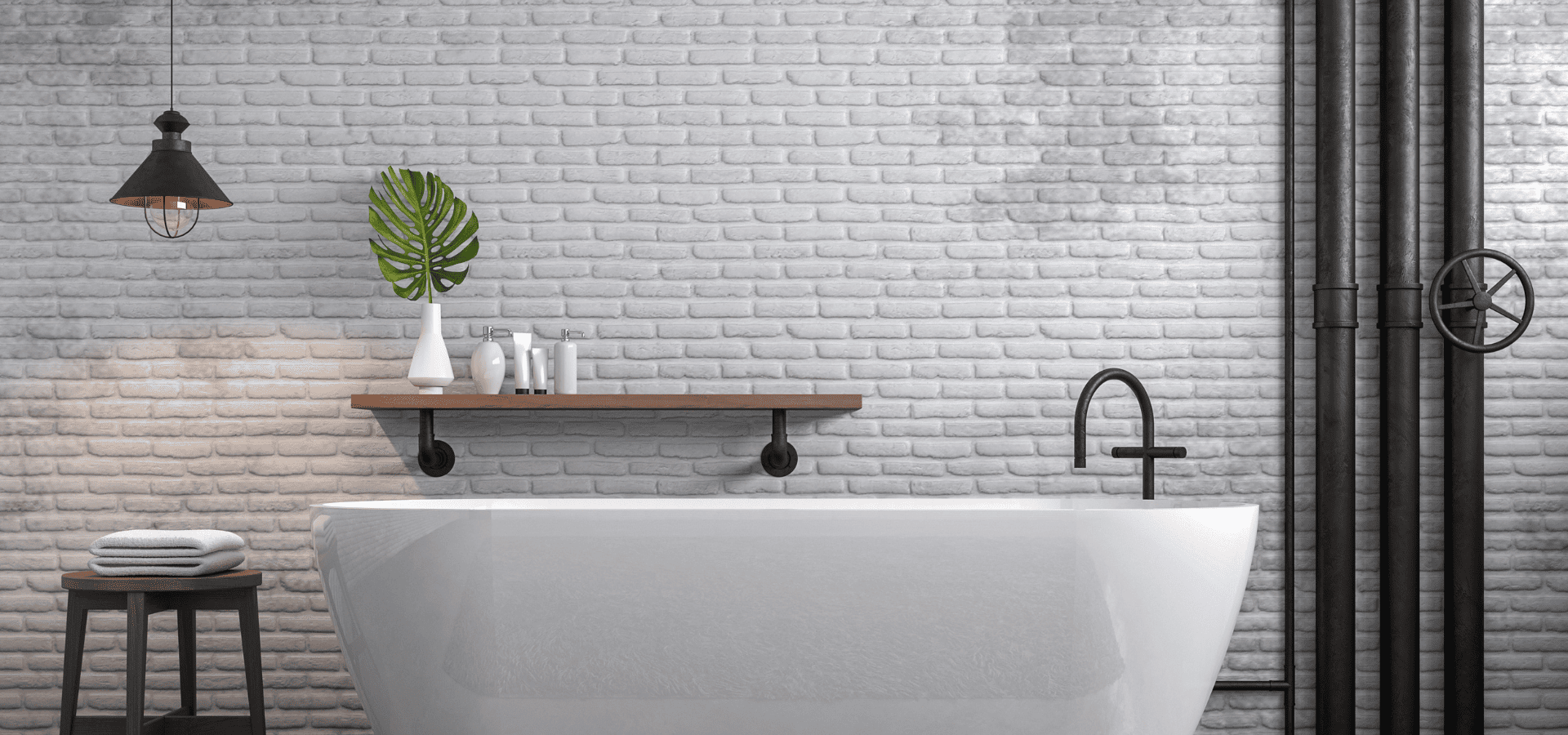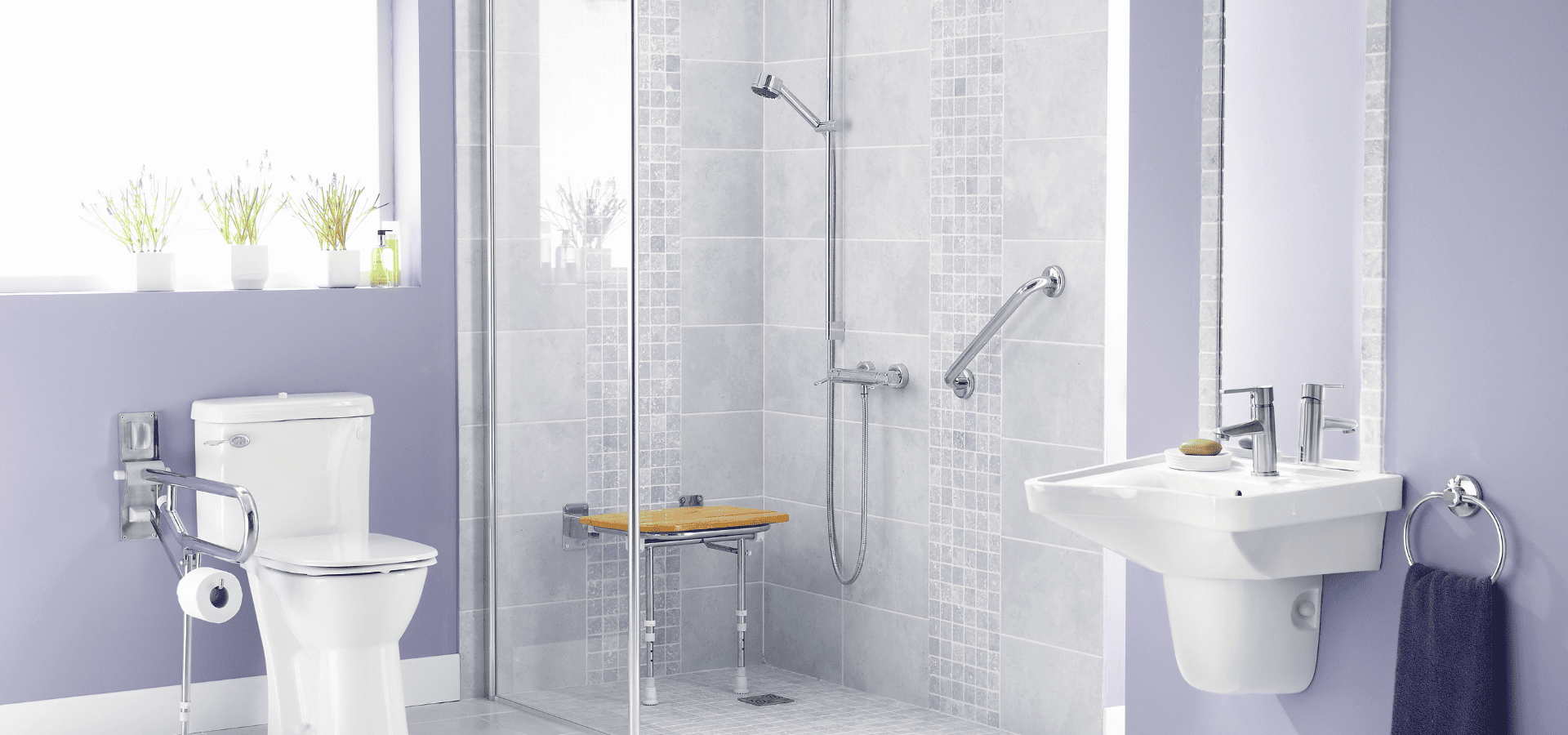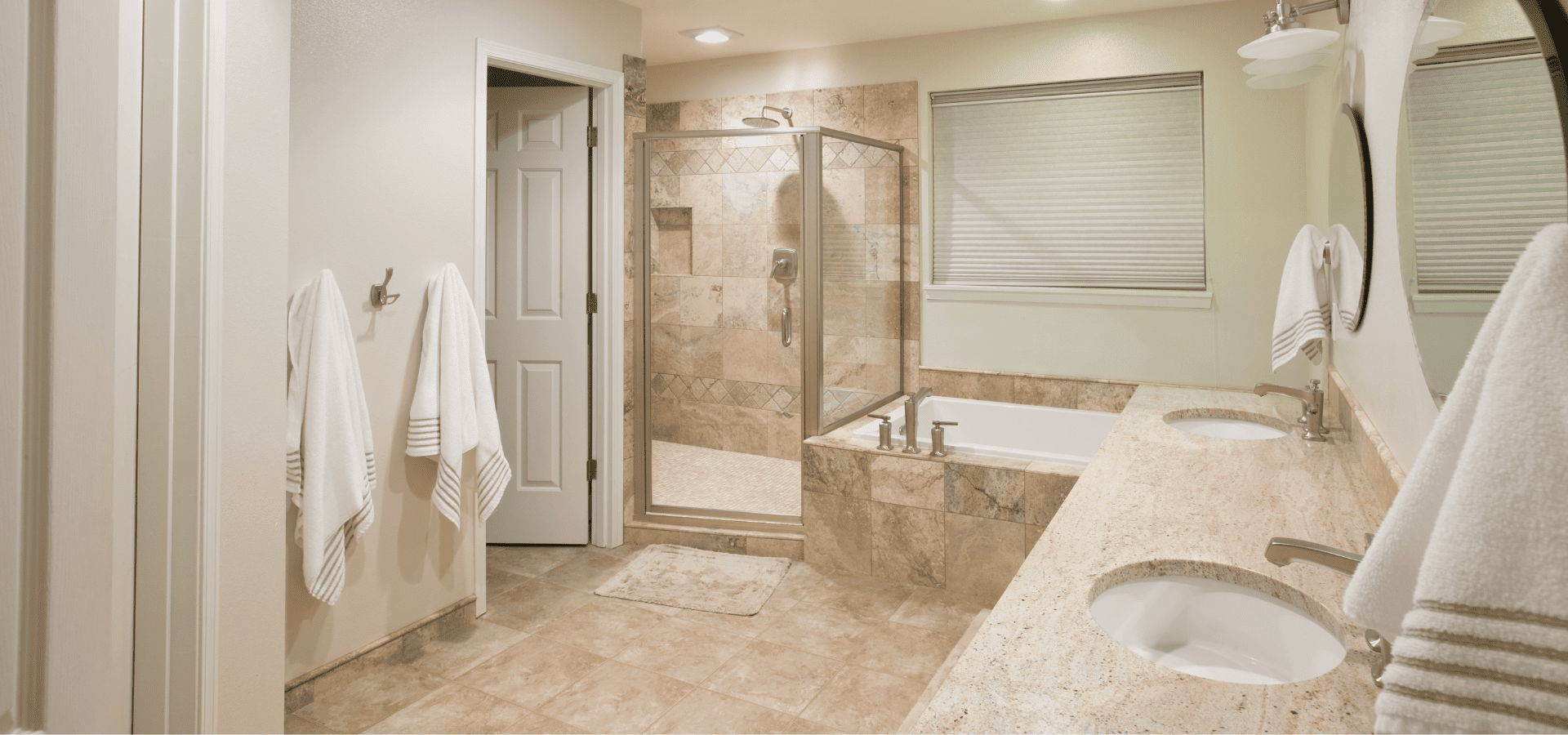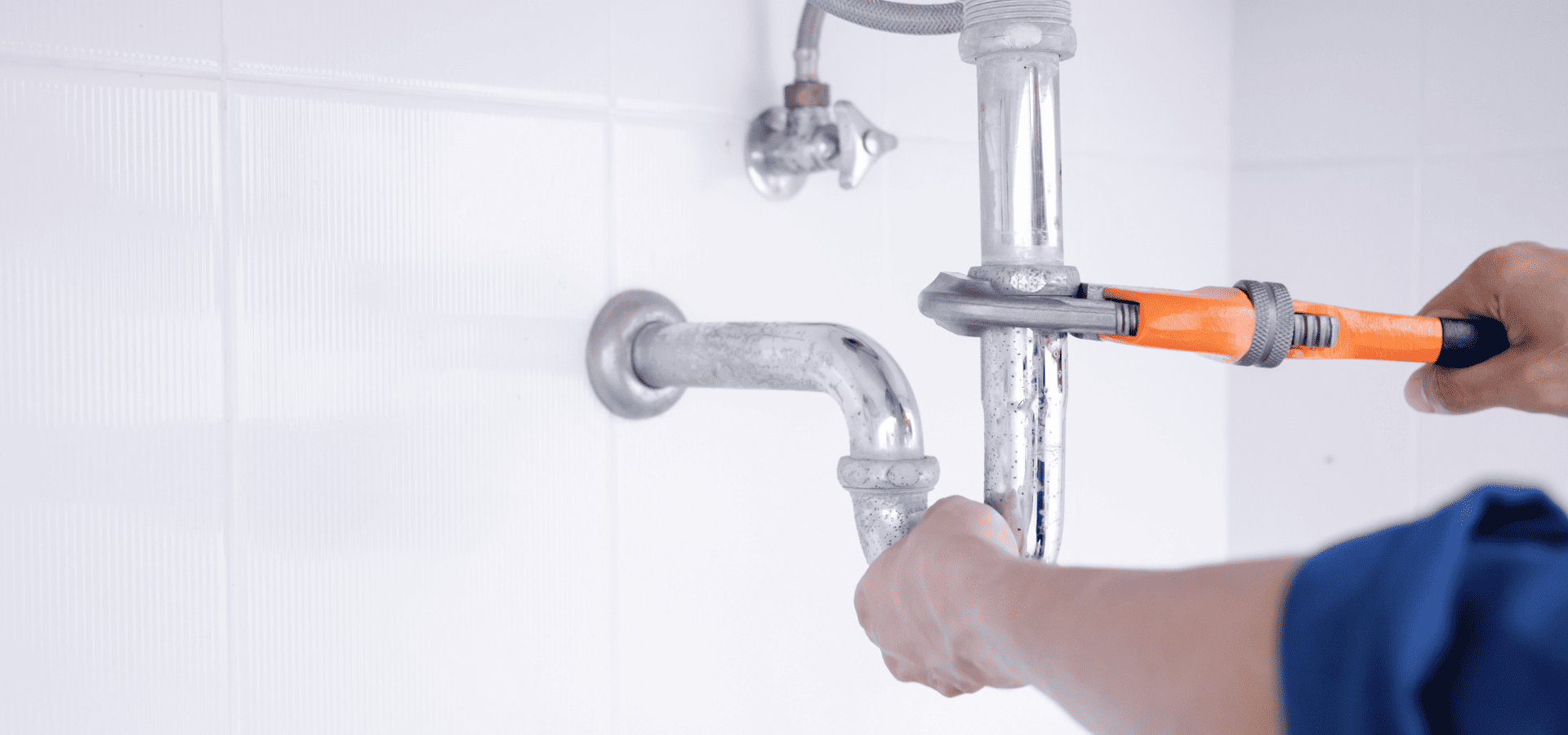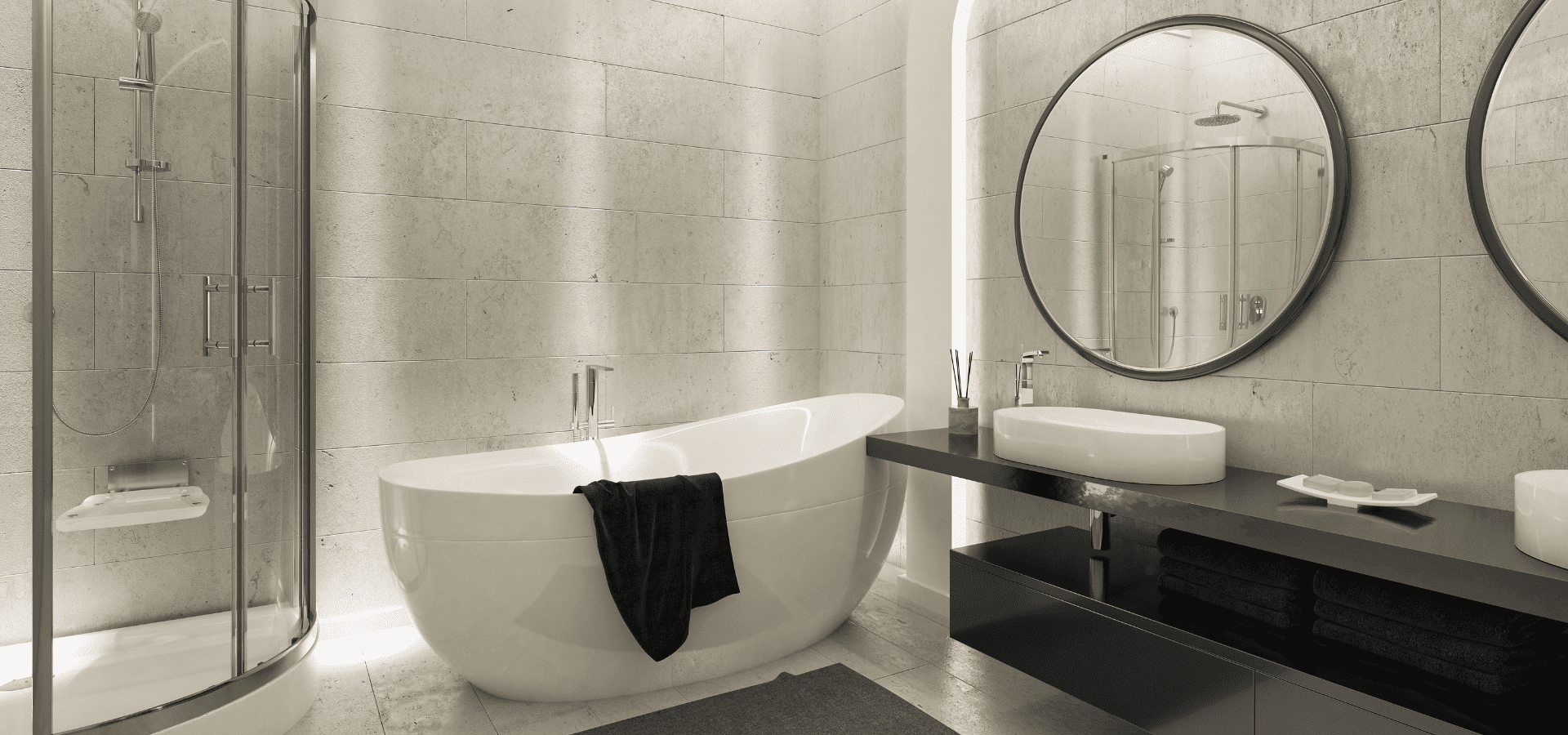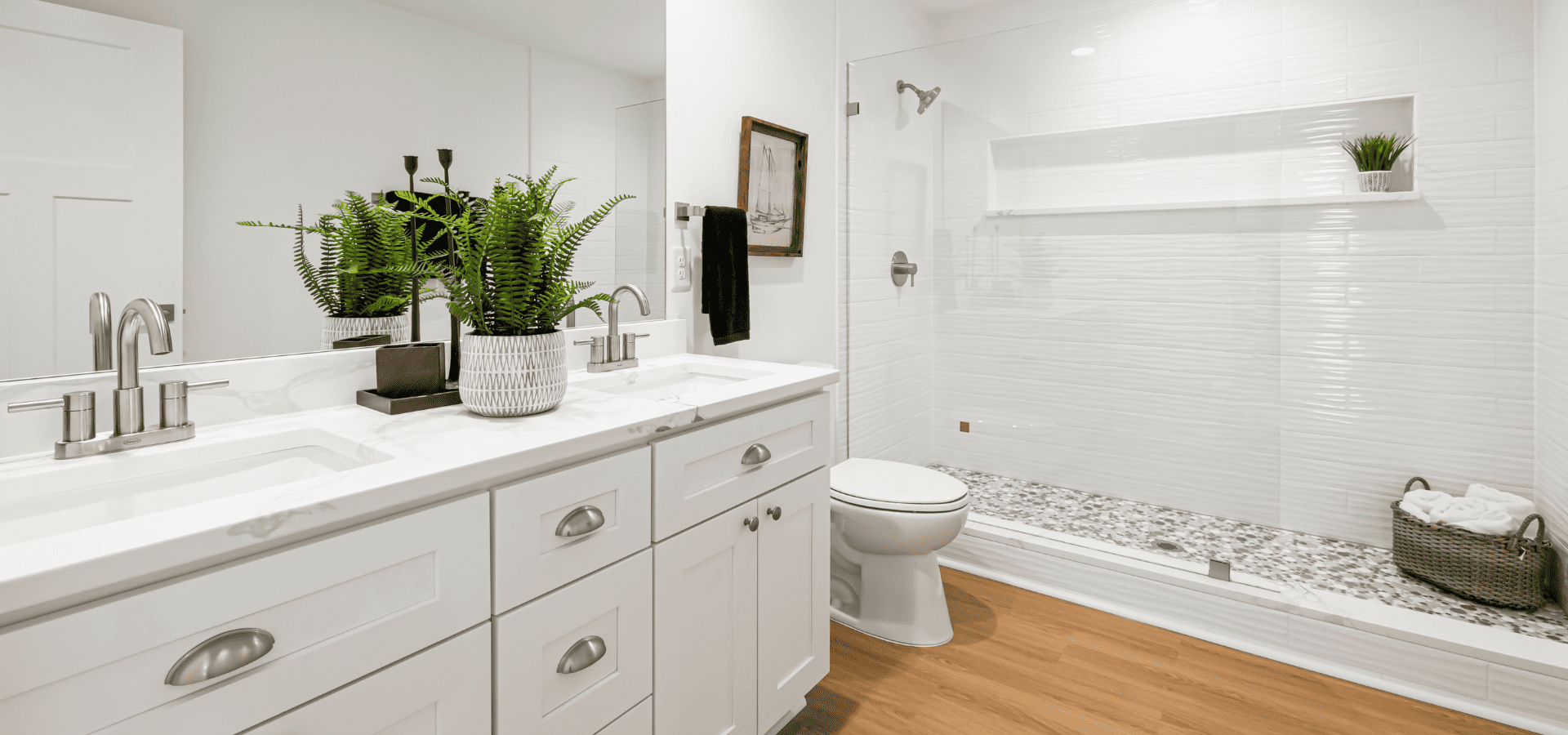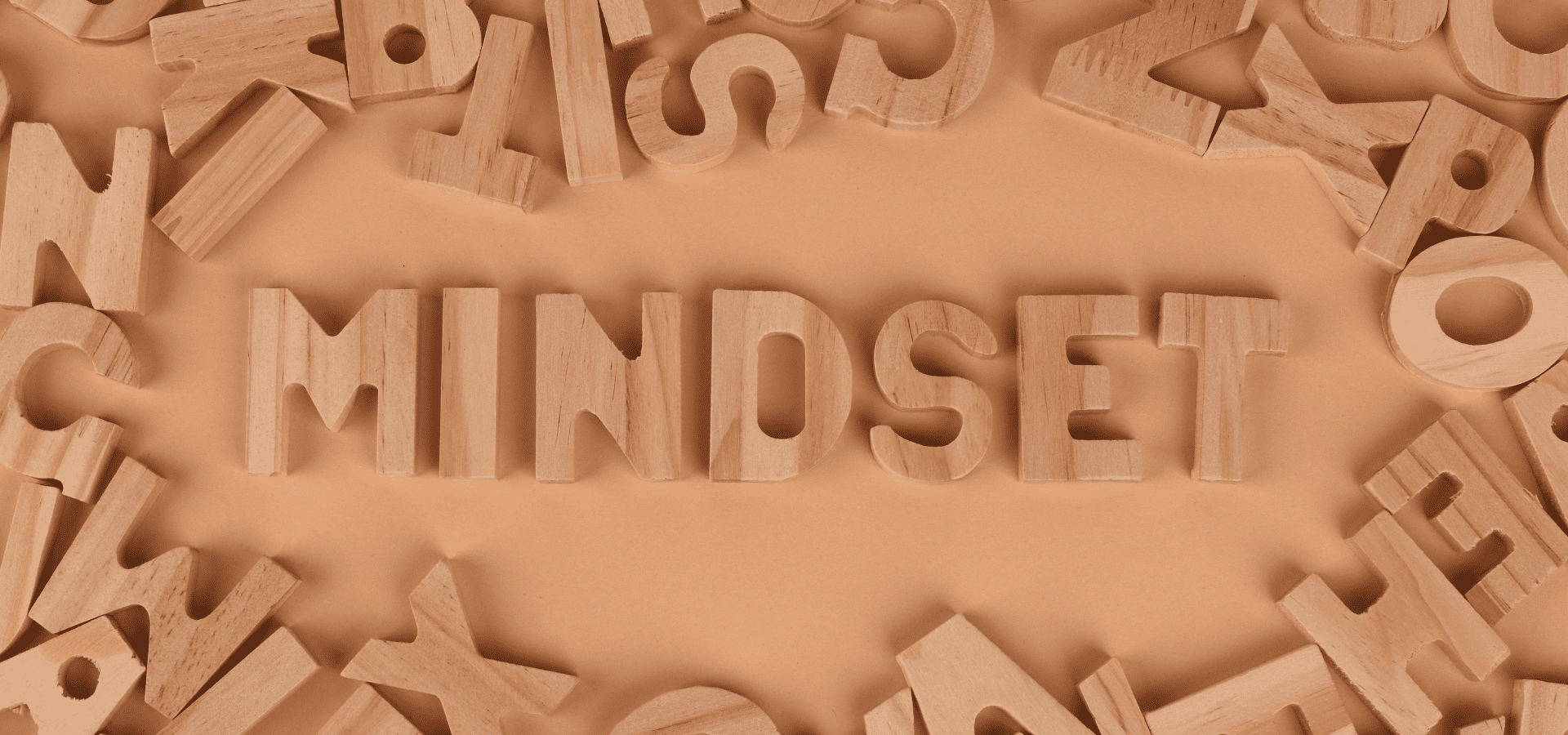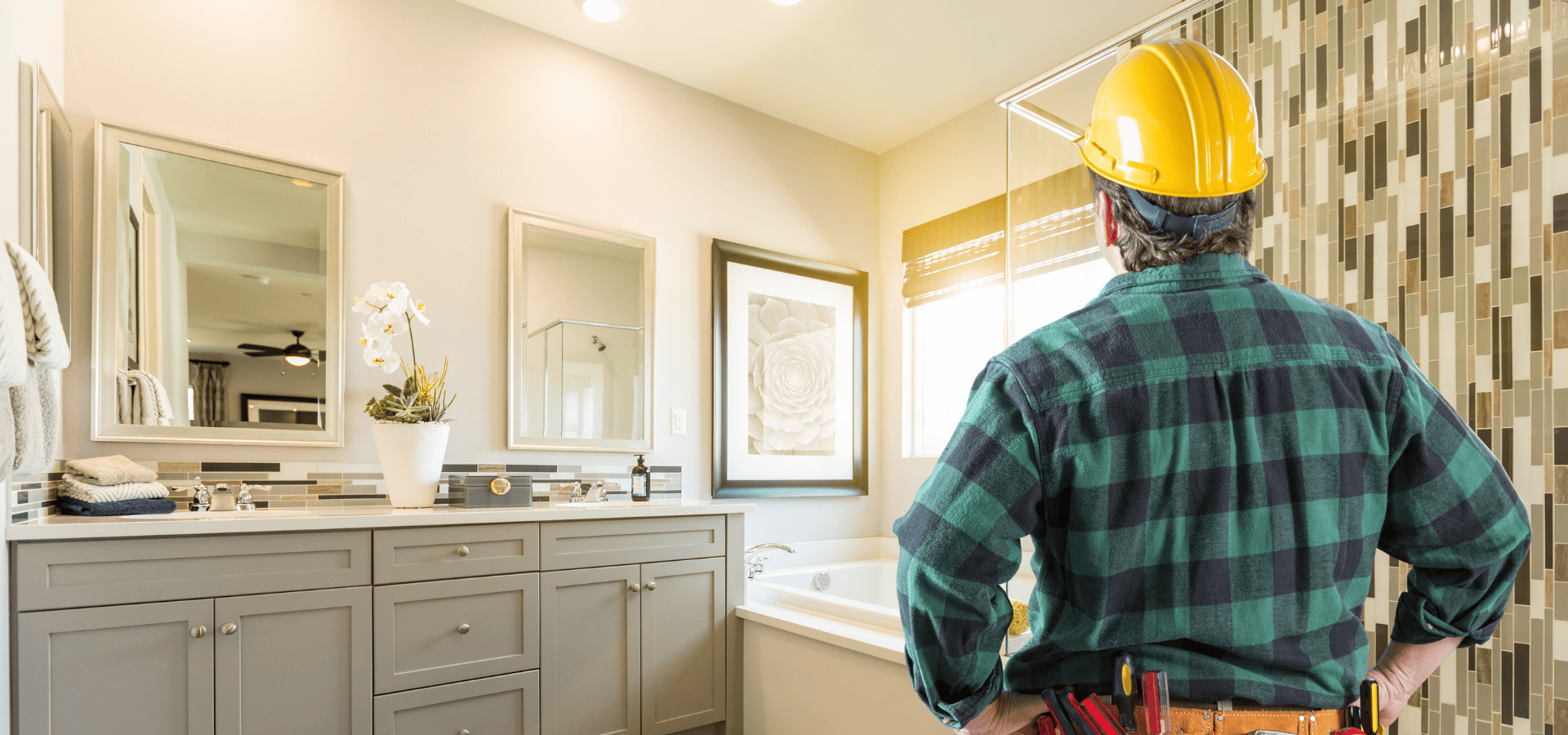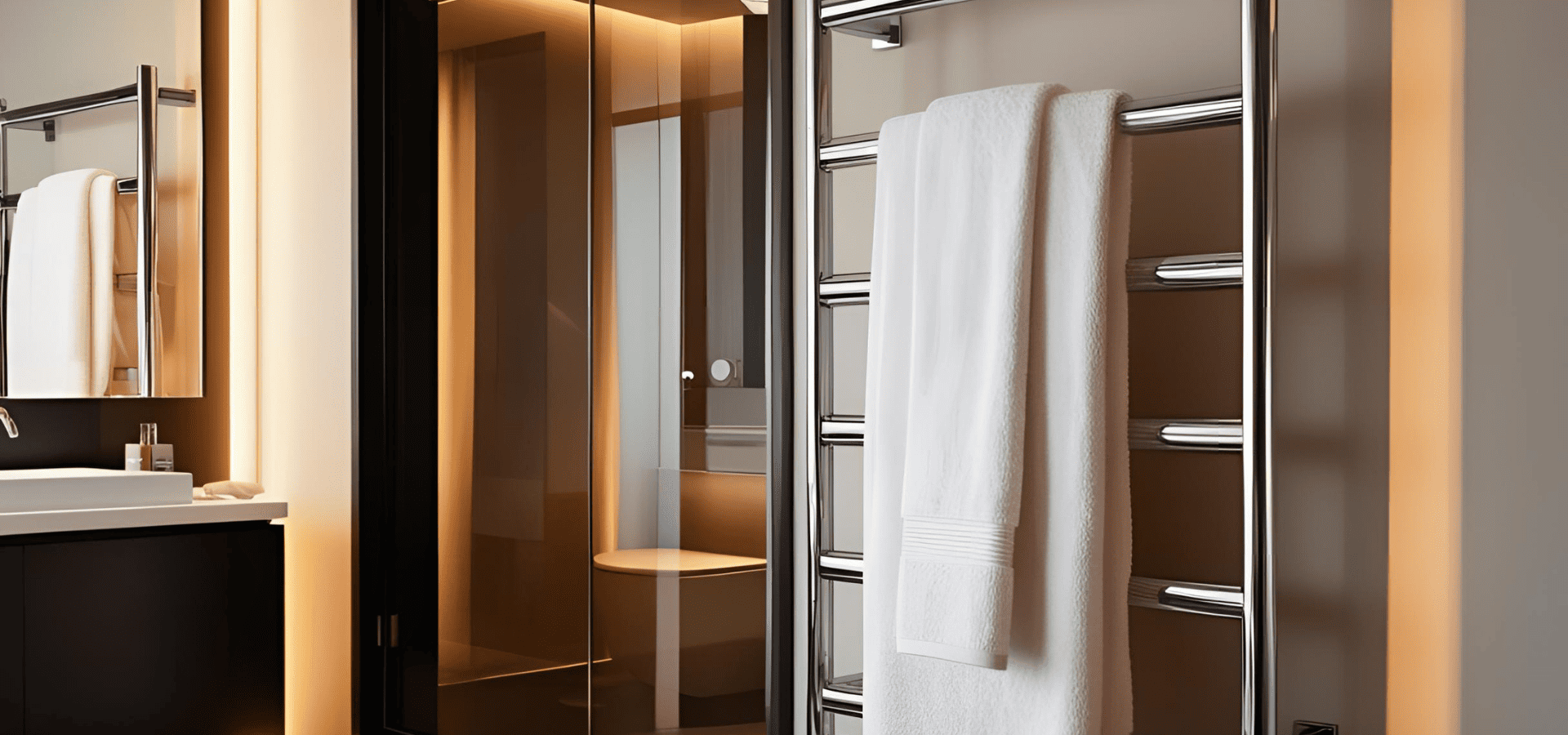How To Design A Pet-Friendly Bathroom
For most of us, the bathroom is about human needs — a place to shower, brush teeth, and maybe enjoy a few minutes of peace before the day begins.
But if you share your home with a dog, cat, or the occasional free-roaming rabbit, that space suddenly does double duty. It’s a grooming station. It’s a mud-control checkpoint. Sometimes, it’s even an emergency kennel.
But here’s the rub: bathrooms aren’t automatically pet-friendly. Smooth tiles, slippery tubs, awkward storage, and cleaning products left in easy reach? It’s a recipe for stress (for you) and potential injury (for them).
The good news? With a few smart tweaks, you can design a bathroom that works for both species. And without turning it into a kennel-chic nightmare either.
Let’s break down how to build a bathroom that keeps our paw-pals safe, their fur under control, and everyone just a little bit happier.
Choose The Right Materials
Pets and polished marble don’t mix. If you’ve ever watched a Labrador try to cut a corner at full speed on slick tile, you know the comedy-meets-danger potential.
A pet-friendly bathroom needs surfaces that can handle claws, moisture, and the occasional “oops” moment, without looking trashed after a year. That means:
- Flooring with grip: Think textured porcelain, matte ceramic, or luxury vinyl tile with a bit of tooth. Natural stone can work too, as long as it’s sealed and slip-resistant. But above all, avoid high-gloss finishes unless you’re after an in-house slip-n-slide.
- Waterproof where it counts: Moreover, waterproof your floors. Not all bathroom floors are truly waterproof, and pet messes don’t always stay where they’re supposed to. Luxury vinyl tile, sheet vinyl, or sealed concrete gives you an extra layer of protection against the post-bath zoomies, but just ensure that the subfloor beneath is properly sealed too.
- Durable counters: Quartz, solid-surface, or high-pressure laminate are your friends here. They shrug off grooming gear, splash zones, and muddy paw prints like a champ
- Splash-proof walls: If you’re adding a dog wash station, go for full-height tiling or washable paint in a satin or semi-gloss finish. You’ll be grateful the first time your new pup discovers the magic of muddy puddles.
As a bonus, these choices aren’t just good for pets. They’re also fantastic for kids and clumsy adults! It’s the kind of design that forgives your mess without sacrificing style.
Build In A Pet Wash Zone
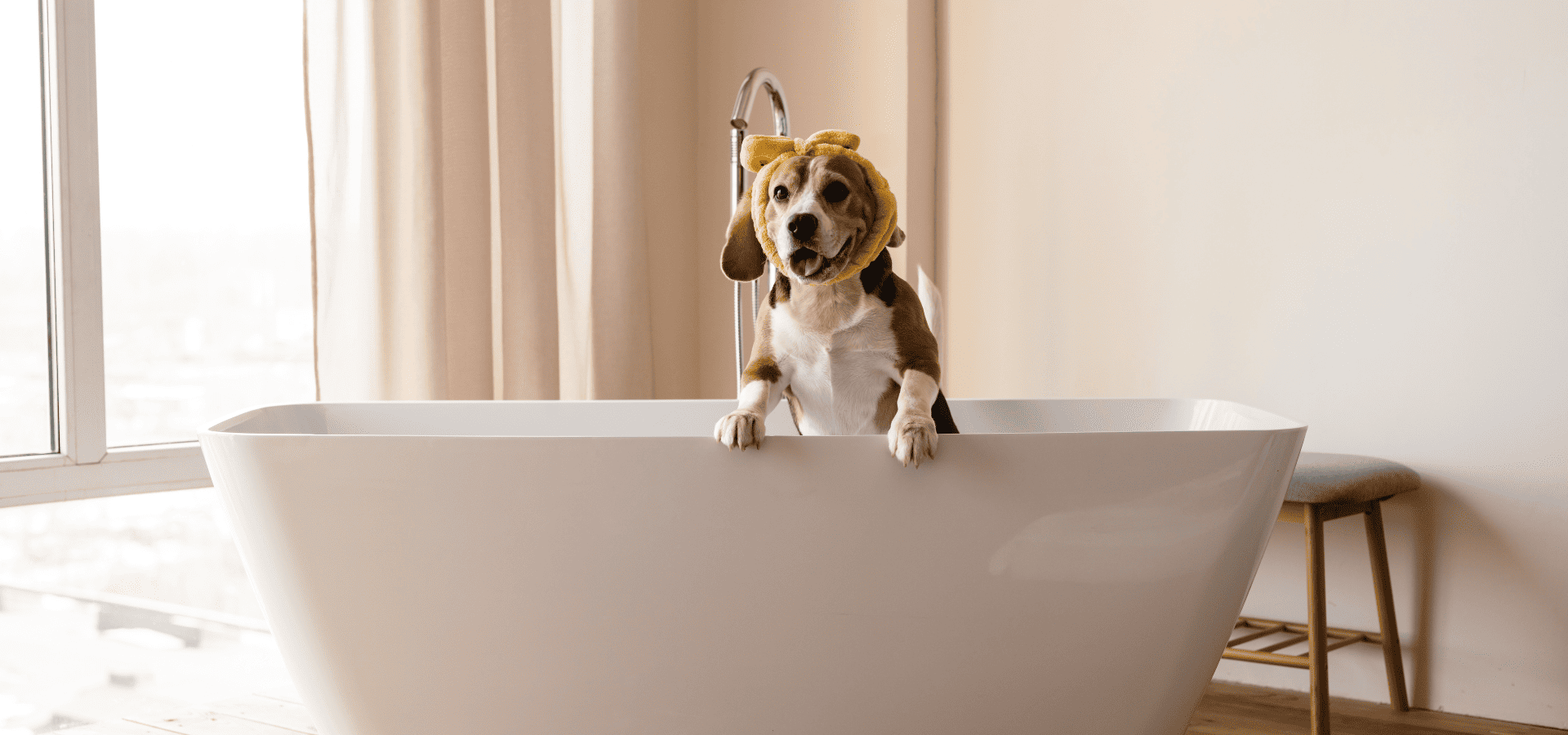
If you’ve got the space and a mud-loving furry fwend, a built-in wash area is a game-changer. It doesn’t need to be a full-blown spa with rainfall showerheads and monogrammed towels. However, even a modest setup can make the post-walk chaos far more manageable.
Here’s what you need to consider when installing a pet washing station:
- Location: Near the entrance from the yard or garage is ideal, as you’ll get fewer muddy paw prints trekking through the house.
- Height: A raised platform will save your back when washing small to medium-sized dogs. For big breeds, a walk-in shower with a low lip and handheld sprayer works best.
- Drainage: Wide, covered drains handle fur, mud, and even the odd stray chew toy without constant clogs.
- Temperature control: Anti-scald valves keep water safe for paws and bellies. (Or the occasional reluctant cat.)
And pro-tip! Installing a handheld shower wand with variable spray settings is a massive win. The gentle stream keeps anxious pets calmer than a roaring downpour, plus it gives you better control over the messy bits.
If you’re tight on space, even a corner with a removable splash guard and drainage mat as a quasi-pet wash zone can make a huge difference.
Drainage Is Important
And just to expand on that drainage point, take good drainage seriously. Pet wash zones and pet-friendly bathrooms alike come with extra splash, fur, and chaos. Good drainage isn’t optional.
As mentioned, a wide, covered drain is a solid start, especially one with a hair trap that doesn’t turn every rinse into a plumbing emergency. If you’re doing a full remodel, consider adding a gentle floor slope toward a linear or trench drain near the wash station as well. It’ll help redirect water (and those stray chew toys) without leaving puddles behind.
The cherry on top is that better drainage also helps dry the space faster. That, in turn, cuts down on mold, mildew, and lingering “wet dog” smell no one asked for.
Storage That Works for Both

Pet ownership comes with gear: shampoos, brushes, nail trimmers, flea treatments, Fido’s exclusive dog towel, etc. Without dedicated storage, it all ends up in a chaotic jumble under the sink next to your own grooming essentials.
Here are a few storage solutions that are built for the pet life:
- Pull-out drawers for grooming tools, so they’re not rattling around in cabinets like a pet-themed maraca.
- Wall-mounted shelves above pet height for cleaning chemicals, medications, and anything else you don’t want getting chewed or knocked over.
- Hooks and rails for quick-dry towels right by the wash station. Grab-and-go convenience does wonders for making cleanup feel less like a mission.
And if you are remodeling, factor in one extra cabinet just for pet stuff. It’s a small upfront cost that pays you back in sanity every time you don’t need to go rummaging aimlessly.
Make It Easy to Clean
Pets don’t track in dirt. They track in dirt, leaves, burrs, puddle water, tufts of fur, and mysterious stickiness that defies classification. The easier your bathroom is to clean, the less bath time feels like punishment for both you and them.
There are a few ways to ensure your bathroom is easy to clean. Minimal grout lines are a great start. Large-format tiles or panels with minimized gaps in between mean fewer seams for gunk to settle into.
Wall-hung fixtures are another great addition. Basically, anything that makes mopping easier. So think things like floating vanities and wall-mounted toilets.
Also, washable rugs! While we don’t often think of a bathroom as a rug space, they go a long way in pet-friendly bathrooms for a few reasons. So skip the thick, fluffy kind: wet dog smell will cling to this no matter how you struggle. Instead, look for machine-washable, quick-dry materials.
And while we’re here, choose finishes that hide the inevitable. A lightly textured or patterned surface won’t show those muddy paw prints nearly as much as a pristine, glossy white tile.
Think Safety First
Bathrooms can be hazardous for pets in ways we don’t always consider. Slippery floors are just the start.
Here are the pet-unfriendly safety hazards to watch out for:
- Toxic products: Keep bleach, drain cleaners, and certain essential oils far out of reach. Cats, in particular, have a talent for sampling things they absolutely shouldn’t, and dogs aren’t much better.
- Electrical hazards: Store clippers, straighteners, and hairdryers securely after use — unplugged. A lot of pets love chewing cords.
- Temperature warnings: Metal fixtures and tiles can heat up in direct sunlight. If you have a well-lit bathroom in a hot climate, it’s important to work around that. Not ideal for curious noses or sensitive paws.
Got a pet that likes to investigate? Install child-safety latches on lower cabinets. They work just as well on nosy terriers as they do on toddlers.
Noise Matters More Than You Think
Some dogs tolerate anything, while others bolt at the sound of a bath being run. And cats? Well, they usually just shoot you a death glare after walking in on you on the toilet.
But regardless, if a relaxed bathroom setting is the goal for your paw-pal, acoustics matter more than you might think. A bathroom that echoes like a cathedral can turn bath time into a stressy sensory overload.
The idea is to soften the space. Once again, rugs or mats help absorb a lot of the sound. Curtains or fabric blinds over the windows will also dull reverb.
Additionally, you should check out solid-core doors. Sealing noise inside (or from penetrating from outside) goes a long way in not spooking pets.
You don’t need to install sound panels or reengineer the acoustics. Just basic sound absorption that reduces the clang and echo helps a lot. Your pet’s nervous system will thank you.
Plan For Litter And Leashes
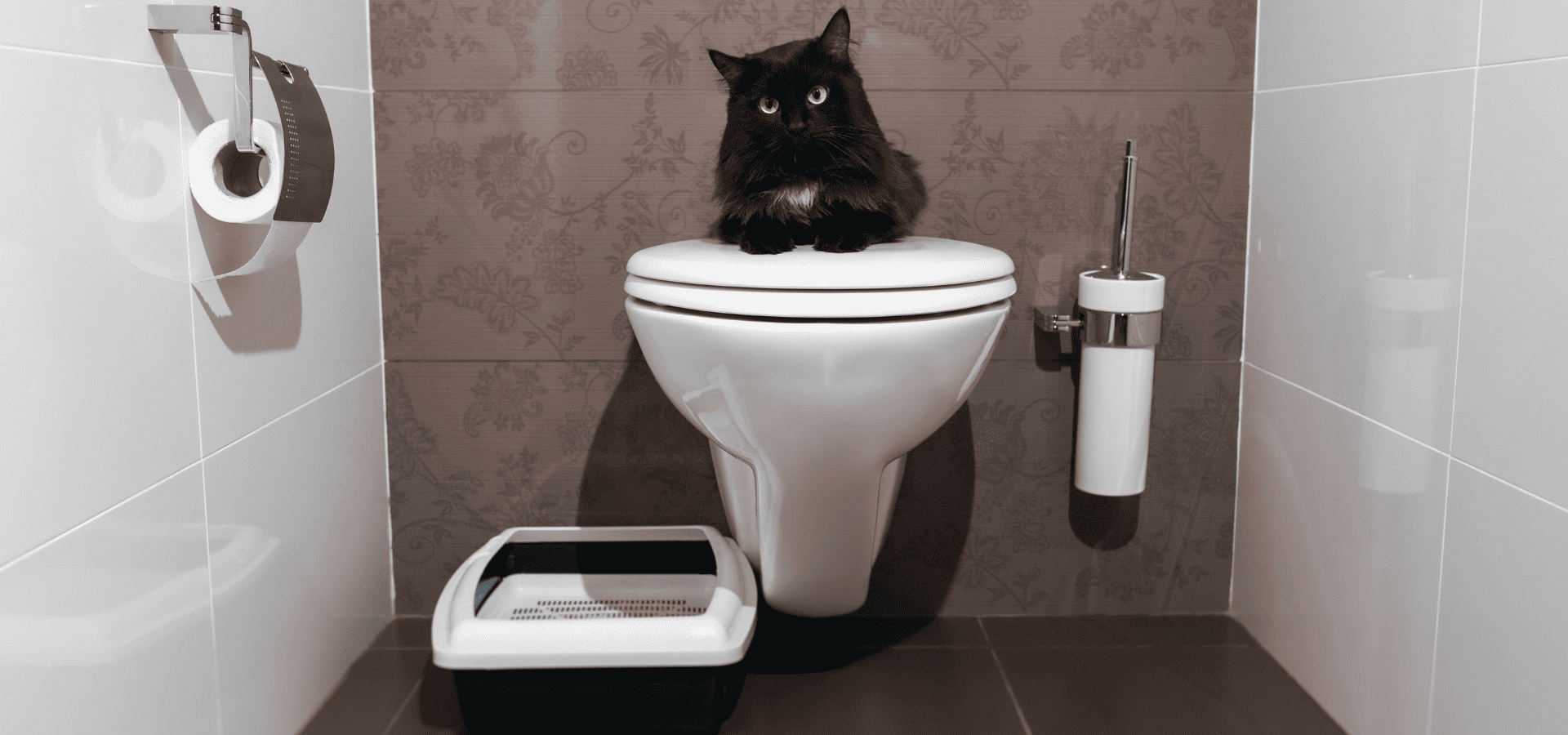
If you’ve got a cat, the bathroom might already double as the litter zone. A remodel is the perfect time to give that setup a little dignity.
Here’s how to plan for the ablutions:
- Built-in cubbies hide the litter tray but keep it accessible while helping to contain scatter.
- Ventilation is your friend as well — a quiet extractor fan goes a long way toward odor control.
- Tiled or sealed flooring under the litter area will save your grout lines from daily abrasion too.
And dog people: a wall hook, cubby, or narrow shelf near the entrance is ideal for storing leads, harnesses, waste bags, and even a dedicated towel for wet paws. That way, you’re not doing the towel grab-and-chase across the house.
Don’t Forget Comfort
Pets adapt to a lot. But that doesn’t mean they should have to suffer through a slippery, echoey, clinical-feeling space. A few creature comforts can go a long way in turning bath time into a bearable (or even bonding) ritual.
- Non-slip mats in the tub or wash area help paws feel secure.
- A bench or ledge gives you a place to sit while drying them off, or a perch for small pets to stand on.
- A ramp or small step makes it easier for older animals to get in and out of the bath without strain.
If your bathroom also doubles as a temporary holding space during storms, guests, or renovations, consider adding a small pet bed in the corner. It turns the room from "punishment zone" into "safe zone."
The Payoff
Designing a pet-friendly bathroom doesn’t mean giving up elegance or turning your ensuite into a vet clinic. Done well, it’s simply a functional, thoughtful space that serves the full household — fur included.
You get a cleaner house, fewer messes, and less back strain. They get comfort, safety, and a routine that feels familiar instead of stressful.
It’s a quiet kind of luxury — one that makes life smoother for everyone. You might even start enjoying bath day.
Well… almost.
More From Us

